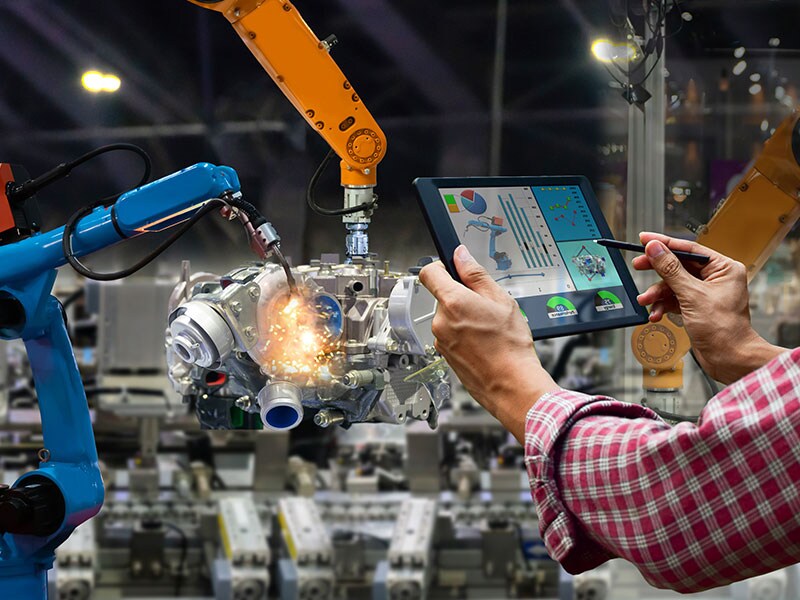Home > AssistEdge > Blogs > Moving the needle for RPA
Moving the needle for RPA

With the highly competitive nature of businesses, leaders today are constantly searching ways to unlock more value from within their processes. Over the last few years, robotic process automation (RPA) has become the de facto go-to approach for business leaders to drive higher efficiencies in the organizational processes. It has helped delegate “robotic” work to machines while keep the value adding activities in the value chain for humans. And what a success it has been!! According to estimates, automation software could save over 140 million FTE hours by 2025, effectively giving that many hours back to business to be used in more productive work. Apart from hard business savings, it has also improved customer satisfaction, brought in more quality into the processes and aided in compliance.
However, it is now time to move the needle and as we mature in this space there are newer challenges that beckon. Bots are not inherently intelligent or cognitive, they are good at doing the stuff assigned to them but do not learn from their mistakes on their own. This is where Artificial Intelligence (AI) can play along with bots to drive greater value. McKinsey has estimated that AI techniques has the potential to unlock value of $9.5 trillion to $15.4 trillion annually and as such it has become imperative that businesses start looking towards a future where automation and AI co-exist.
Components of cognitive RPA
Although AI as a field is quite wide in terms of its scope, in relation to RPA, we can divide the AI blocks into 4 categories. These categories are in a constant flux and may change over time and would serve as a starting point to discuss the impact of AI on automation. Those components are:
Machine Vision or Computer Vision
Machine Vision or Computer Vision refers to the ability to identify objects, scenes and activities in images. It involves a number of processing techniques to break down images into manageable chunks of information which can then be analyzed to gather insights. Perhaps, the most common type of computer vision that is in use in the RPA world is Optical Character Recognition (OCR) which helps in identifying characters of a particular language from an image. The use cases range from reading documents (PDFs, images) to identifying UI elements in a web page.
Think of an invoice processing use case which is typically beset with large number of manual tasks, errors and inefficiencies. The entry point of this process is generally an invoice which could be digitized into an image or an PDF. OCR helps in identifying the various elements of the invoice which would then be typically posted into an accounting software or an ERP package (like SAP) using RPA.
Essentially computer vision with RPA can help in processing structured and semi-structured documents and taking them to logical conclusion.
A couple of use cases where computer vision can be used in conjunction with RPA are:
The future holds infinite possibilities with advancement in technologies and we might be able to intelligently read and capture information from unstructured documents as well such as contracts, agreements and letters, and determine the right course of action.
Chatbots
In the US, the number of chat app users has crossed 150 million users in 2018 and is expected to reach 171 million users by 2022 effectively meaning that 45.5% of US population would be using one of the messaging apps. Chatting has become one of the most preferred way of communicating with almost all aspects our life, be it friends, customer service, or even business.
Chatbots could use their cognitive prowess to recognize the said or in some cases, unsaid needs of a customer or a business user. Now, it could invoke an integrated RPA bot to initiate the backend processes that might be required to resolve the customer needs, almost on a real time basis.
Think of a typical organizational process where senior executives want certain data points to assess organizational health. While there are standard and custom reports that are periodic in nature, chatbots could enable a culture where data is available whenever needed. Just ask (or perhaps, type)!!
From a consumer perspective think of Facebook chatbots which can be used along with RPA to trigger campaign workflows to delight customers with the right information.
A few other use cases where chatbots in could be useful are:
Text Analytics and Knowledge Ontologies
By some estimates, over 80% of all data available in an organization is unstructured in nature. Take the example of lot of knowledge being captured in free form emails or chats; or even tickets where user is allowed free hand in describing what they need.
An example is analysis of social media content to identify adverse events to take action to manage brand reputation. Typically, this is done in a manual manner where analysts read and analyze social media content and then derive specific insights leading to longer time to call to action. This can be solved by deploying a real-time alerting mechanism where text analytics identifies the sentiment of real-time social media posts and then, an RPA bot calculates velocity of adverse comments, fetches relevant data from different social listening platforms and finally sends alert emails to right stakeholders. It will result in higher customer satisfaction and provide enough time to douse the social media fires before they get out of hand.
Extending this to an enterprise, think of a tech support that is working day in and day out maintaining certain software. Now of course there would be SLAs and other procedures in place to handle spikes in maintenance ticket volumes. But think of a major customer raising a concern over channels other than the ticketing application, for example multiple concern emails to higher management. Text analytics can be used to determine the sentiment of those emails, correlate them to the concern raised and then a bot raises an appropriate flag to the support team for immediate resolution.
Other use cases where text analytics could be used along with RPA to drive exponential benefits are:
Predictive Analytics / Machine Learning
In this article, till now we have explored use cases which enable a trigger to invoke certain process activities. Let’s turn this problem around, and we are presented with a treasure trove of historical data that is generated out of the process audit trails (something that RPA bots are typically tuned to do for compliance and track-and-trace capabilities). If we feed that data into various machine learning algorithms, one might be able to find answers to a lot of questions such as which elements of the process can drive a certain outcome.
For example, let’s say there is a bot that processes orders for an organization. One of the correlations you might be able to see from the audit logs is that the order fulfilment rate goes up when ordered at a certain period of time which could then be incorporated into the bot settings.
A few other use cases where data analytics can drive immense value are:
The holy grail is when through process mining and auto-generated process maps, robots can be created automatically without the need to configure them manually. We have taken a significant leap towards it by launching AssistEdge Discover which helps in doing automated process discovery and generating process maps through deep neural network algorithms, thus providing empirical data to backup the intent to automate.
Conclusion
In the next few years, AI is expected to have tremendous impact on the way we work. Delegation of work to machines by human would become routine and business benefits would encompass a much broader area than mere cost savings. AI technologies are becoming more and more accessible to citizen developers and combined with RPA would bring in the next wave of business excellence.
As an RPA vendor, the onus is now on us to find out ways to integrate AI into our offerings more seamlessly, develop transformational use cases that utilize the full power of AI and make the tech accessible to all. As an RPA buyer have a vision beyond cost savings while implementing AI and automation, focus on use cases around customer experience and hire the right experts to implement them.
References:
1) https://www.mckinsey.com/business-functions/digital-mckinsey/our-insights/disruptive-technologies
2) https://www.mckinsey.com/featured-insights/artificial-intelligence/notes-from-the-ai-frontier-applications-and-value-of-deep-learning#part3
3) https://www.emarketer.com/content/messaging-apps-and-marketing-2018


Jaban Jyoti Phukan
Senior Consultant – Expert Services (AssistEdge), EdgeVerve
More blogs from Jaban Jyoti Phukan >